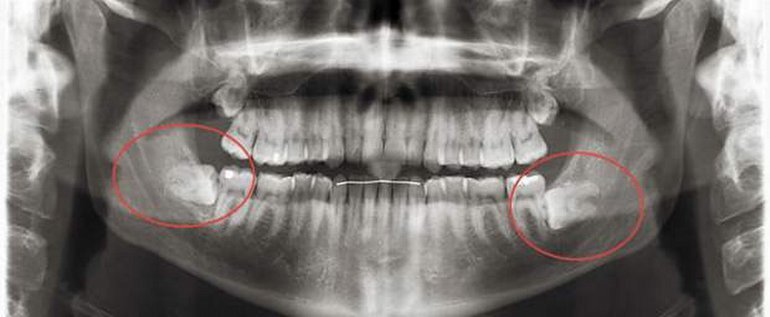When it comes to our teeth, it is no surprise that we encounter some rather strange details. For example, we complete the formation of our last teeth after relatively aging. Wisdom teeth, as the name suggests, come out when approaching the age of 20 (between the ages of 16 and 20) and can sometimes come out at very interesting angles because there may not be enough space.
Compared to great ape species, humans’ molars erupt really late. The only primate that comes close to humans in this regard is the chimpanzee, which had its last pair of molars ejected at the age of 12. But why is this the case with humans? This is something that has puzzled scientists for a long time. Now, in a study published in the journal Science Advances, two researchers think they may have figured it out.
“Our results support the notion that biomechanical restriction on chewing form in adult primates operates during the craniofacial growth period. This restriction regulates where molars can safely emerge into functional occlusion that modulates the timing of emergence when viewed in the mechanistic context of overall orofacial growth.”
If this explanation sounds confusing to you, let’s simplify it a bit. . . Our wisdom teeth don’t grow until our jaws are large enough to safely accommodate them. While this may seem logical, humans are very strange creatures. We have wonderfully big brains and small, retracting noses; It takes decades for us to reach full adulthood. When you try to match the usual timing of the emergence of primate molars with a species like this, it’s quite normal to get confused.

“It turned out that our jaws grew very slowly, probably because of our slow life histories in general,” said study co-author Gary Schwartz. delays its formation and causes molar exit to coincide with our very late age.”
This “mechanically safe” fit depends on two things: the size of our jaws, as well as the mechanics of our chewing muscles. The couple says they’ve discovered that molars that erupt too early will result in a gaping and chewing system that isn’t ready for it, and that trying to actually use those early wisdom teeth will damage the jaw joint.
This delicate balance has also been found by researchers in nearly two dozen species of primates, from small lemurs to gorillas. The team created 3D biomechanical models of skull and masticatory muscle development in these species and then combined these with information on jaw growth rates in each animal. In this context, people’s late-appearing teeth began to make much more sense.
“Our findings suggest that delayed molar egress in H. sapiens is the result of excessive facial retraction coupled with a slowdown and prolonged slowing of orofacial growth,” he says. “[This] means that molars can safely erupt. It is a combination of orthognathic [with a mobile chin] faces with elongated chin growth resulting in a delayed view of the alveolar space.”
The best part of the discovery – at least for anyone who knows the pain of an impacted wisdom tooth – has implications for clinical dentistry. Lead author Halszka Glowacka suggests that by exploring some of the finer details in the model, they may be able to help understand the painful phenomenon.
“One of the mysteries of human biological development is how the precise synchrony between molar formation and life history arises and is regulated,” says Glowacka. It provides the lens.”